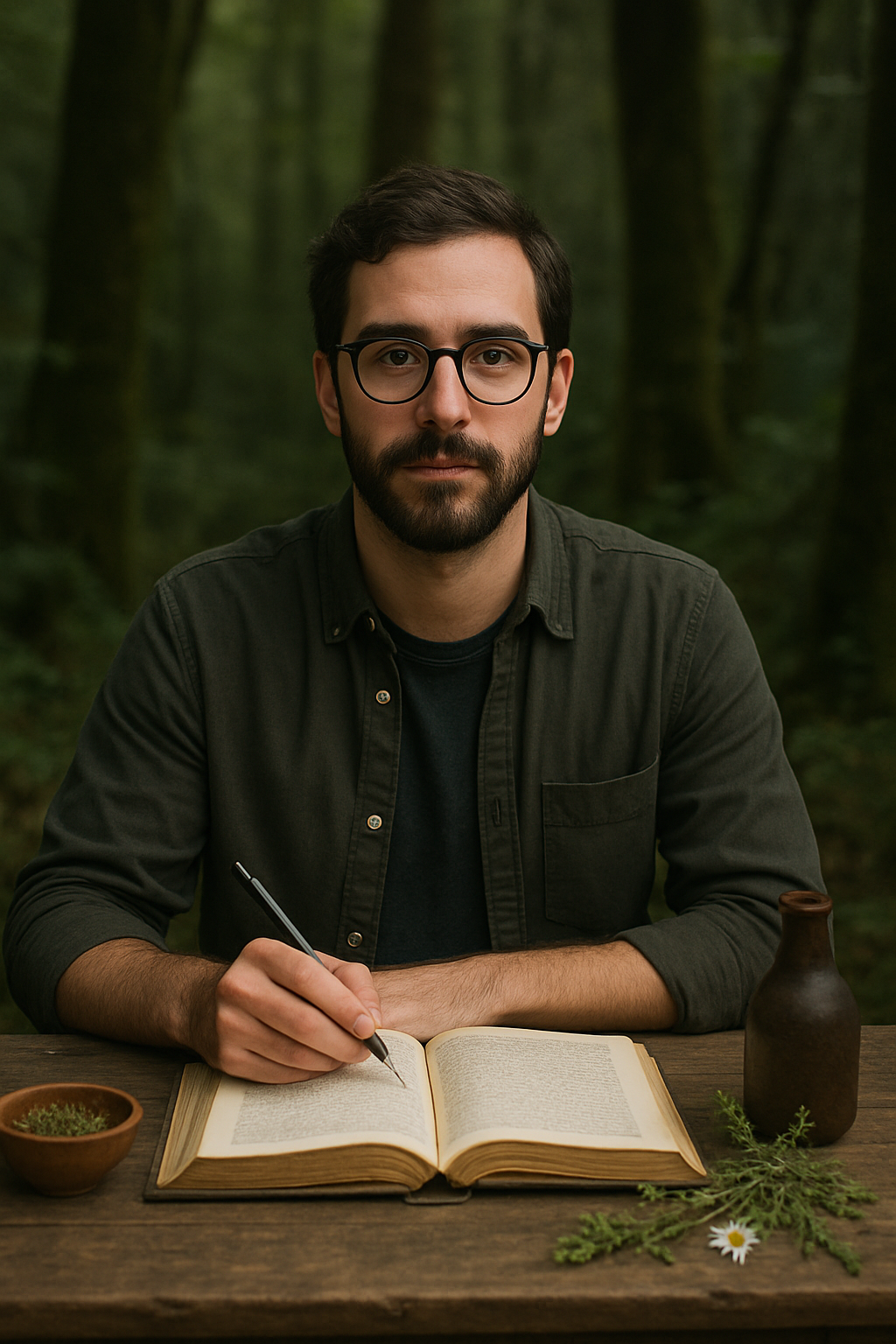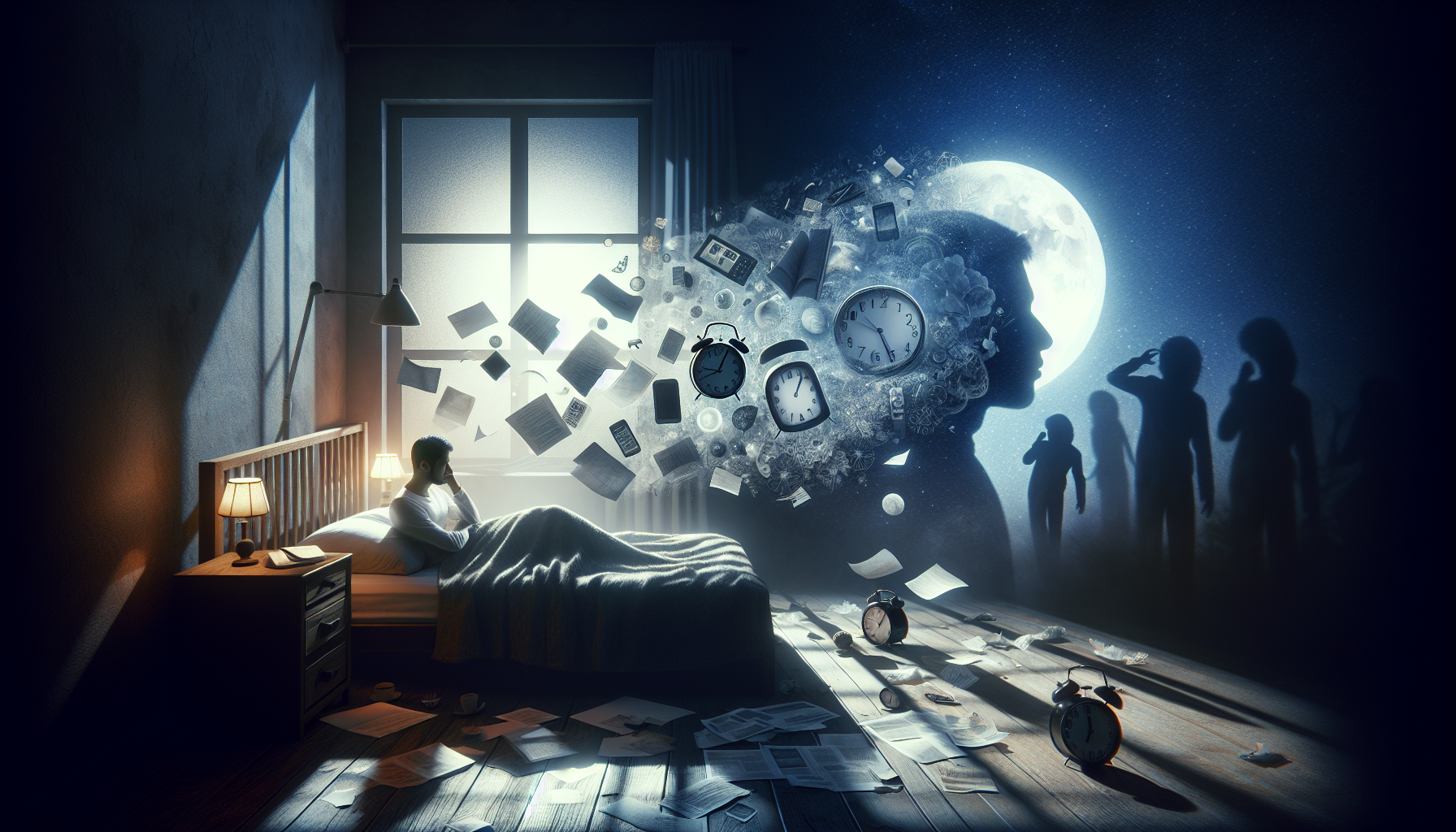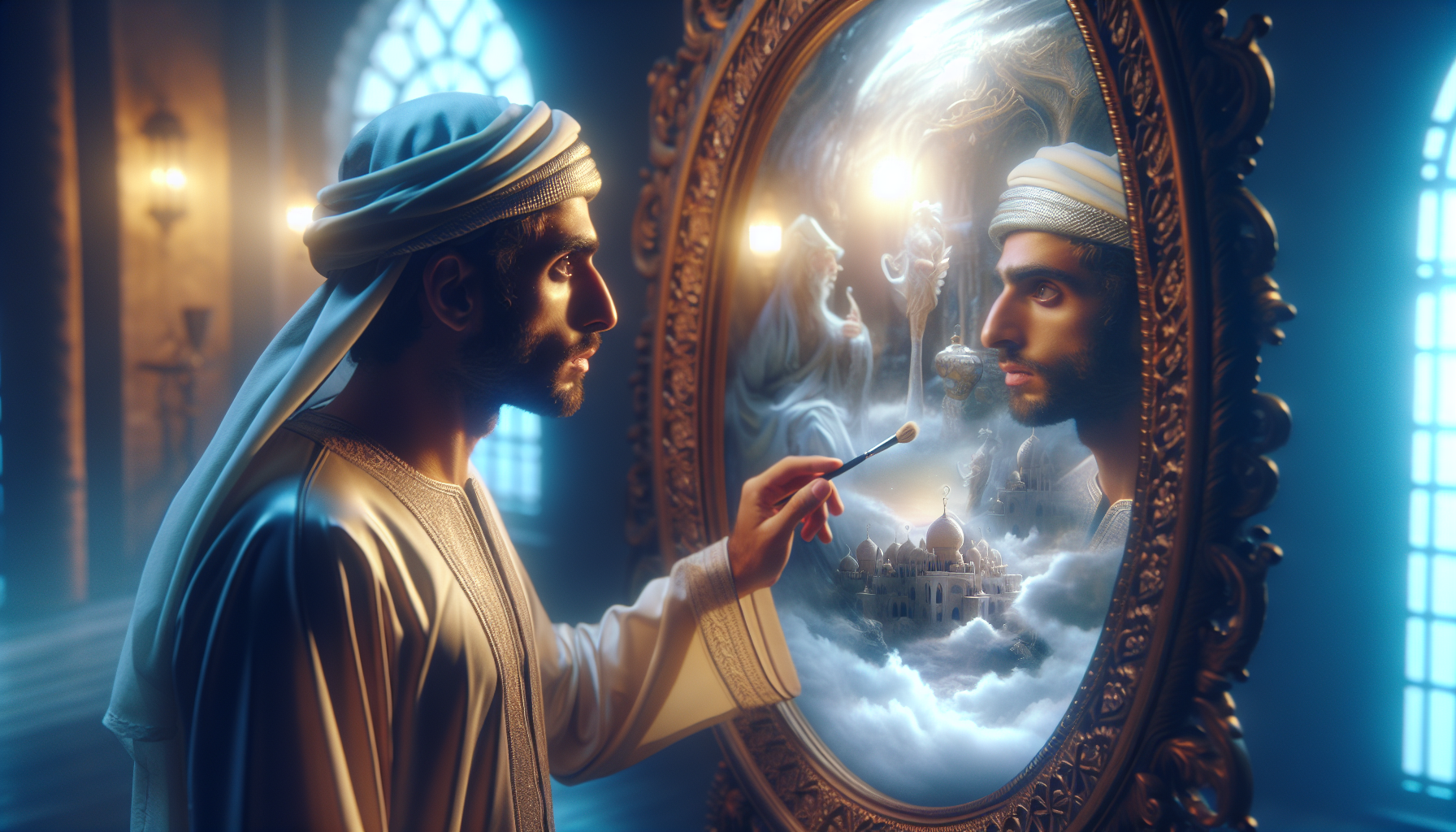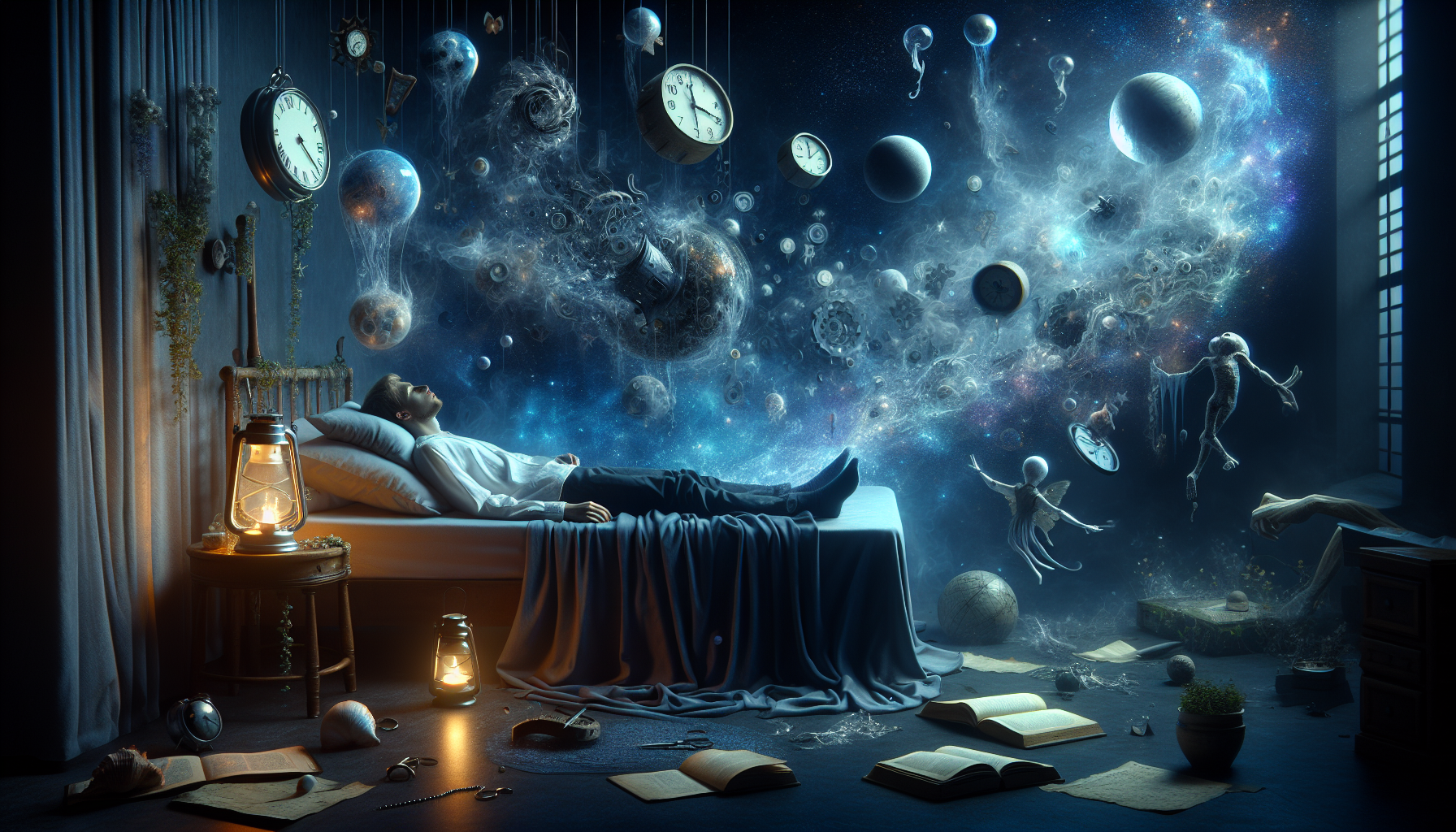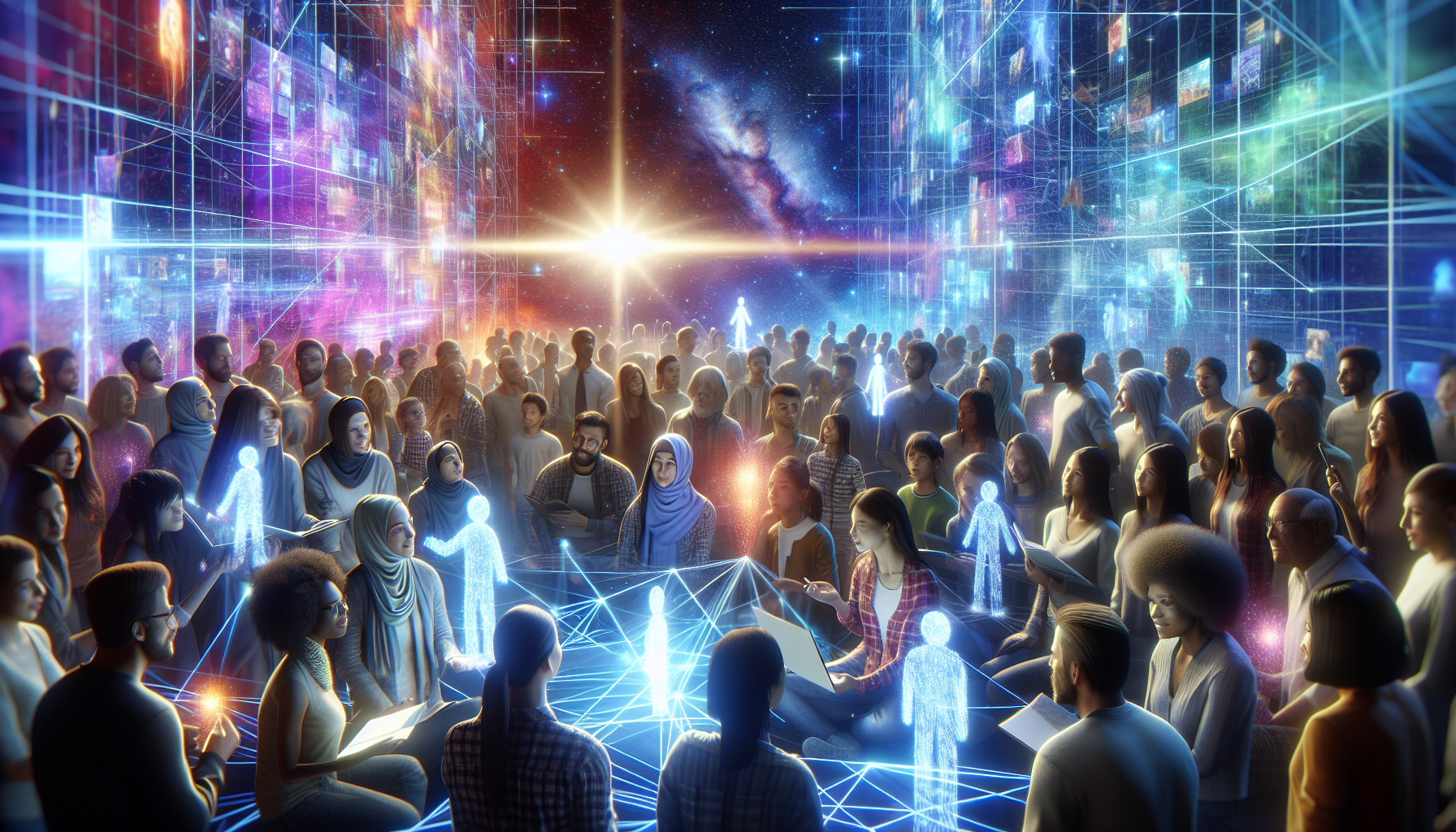In a world where the boundaries between reality and fantasy are often blurred, there exists an art form that captures this delicate dance in the most captivating manner—collage art. Imagine a canvas where dreams and reality coalesce, forming landscapes that are as whimsical as they are profound. This is the essence of “Dreamscapes,” where imagination knows no bounds and each piece invites viewers to explore the depths of their own creativity. As we embark on this journey through the fascinating realm of collage art, we will uncover the myriad ways in which artists use this medium to not only depict the surreal but also to express the intricacies of the human experience. 🌌
Collage art, with its eclectic blend of elements, is much like a dream itself—fragmented yet cohesive, familiar yet otherworldly. At its core, it is a celebration of the imagination, a testament to the boundless possibilities that arise when disparate images and ideas converge. Artists who delve into this medium often find themselves acting as both creator and curator, piecing together fragments of reality to construct a narrative that transcends the ordinary. Throughout this article, we will explore the history of collage art, tracing its evolution from early experiments in the 20th century to the dynamic and diverse expressions we see today. We will delve into the techniques that artists employ, examining how the juxtaposition of images can evoke emotion, provoke thought, and challenge perceptions. 🎨
But beyond technique and history, there is a deeper layer to uncover—how collage art serves as a mirror to the subconscious, a conduit for expressing dreams, fears, and desires that reside within us all. We will examine the psychological aspects of this art form, considering how it taps into the collective unconscious and offers a visual language for the ineffable. Through interviews with contemporary artists and analyses of iconic works, we will reveal how these dreamscapes not only reflect the individual artist’s vision but also resonate on a universal level, inviting each viewer to embark on their own journey of introspection and discovery. So, prepare to immerse yourself in a world where imagination reigns supreme and the ordinary is transformed into the extraordinary. 🌟
The Art of Collage: A Historical Overview
Collage art, as a form of artistic expression, traces its origins back to the early 20th century with movements such as Cubism and Dadaism. Artists like Pablo Picasso and Georges Braque pioneered this technique by incorporating various materials like newspapers, fabric, and photographs into their paintings. This innovative approach challenged the traditional norms of fine art and provided a fresh perspective that allowed for a more abstract representation of reality. Over the decades, collage has evolved, incorporating modern digital techniques and becoming a versatile medium that continues to inspire contemporary artists.
The Dadaists, particularly, embraced collage as a way to protest against the cultural and political norms of their time. By juxtaposing seemingly unrelated images and text, they aimed to create a sense of chaos and provoke thought. This rebellious spirit is still evident in modern collage art, which often seeks to question and redefine societal norms. The Surrealists further expanded the scope of collage by using it to explore the subconscious mind, making it a powerful tool for delving into the depths of imagination.
With the advent of digital technology, collage art has undergone a significant transformation. Artists now have access to an infinite array of digital tools that allow for the seamless blending of images and the creation of intricate, multi-layered compositions. This has opened up new possibilities for exploring the boundaries of imagination and has made collage more accessible to a wider audience. Whether through traditional cut-and-paste methods or digital techniques, collage remains a vibrant and dynamic form of artistic expression.
The Impact of Technology on Collage Art
In recent years, the rise of digital technology has revolutionized the way artists create collages. With software like Adobe Photoshop and various mobile apps, artists can now experiment with textures, layers, and effects that were previously difficult to achieve with traditional methods. This has not only broadened the scope of what can be considered collage art but has also democratized the art form, allowing artists from diverse backgrounds to explore their creativity.
One significant advantage of digital collage is the ease of editing and manipulation. Artists can easily adjust colors, remove or add elements, and experiment with different compositions until they achieve the desired effect. This flexibility has made collage a popular medium for commercial use, as well, with graphic designers using it for advertising, branding, and editorial content. The ability to merge traditional art techniques with modern technology has resulted in a unique blend that continues to captivate audiences.
The internet has also played a crucial role in the dissemination and appreciation of collage art. Platforms like Instagram and Pinterest allow artists to share their work with a global audience, fostering a community of like-minded creatives. Online tutorials and workshops have made it easier for aspiring artists to learn the techniques of collage, while online galleries provide a platform for showcasing and selling their creations. This digital ecosystem has not only expanded the reach of collage art but has also encouraged a collaborative spirit among artists worldwide.
Exploring the Psychological Depths of Collage Art
Collage art is not just about assembling disparate images; it is a profound exploration of the subconscious mind. By juxtaposing different elements, artists can evoke emotions and provoke thought in ways that traditional art forms may not. The process of selecting and arranging images allows artists to delve into their innermost thoughts and feelings, creating a visual narrative that resonates with viewers on a deep psychological level.
The surreal and dreamlike quality of collage art makes it an ideal medium for exploring themes of identity, memory, and transformation. Artists often use symbolism and metaphor to convey complex ideas, inviting viewers to interpret and engage with the work on a personal level. This open-ended nature of collage allows for multiple interpretations, making it a powerful tool for storytelling and self-expression.
Moreover, the act of creating a collage can be therapeutic, providing artists with a means of processing emotions and experiences. The tactile nature of traditional collage, involving cutting, tearing, and assembling materials, can be a meditative and cathartic process. In digital collage, the ability to experiment and play with different elements offers a similar sense of freedom and exploration. Whether through analog or digital methods, collage art serves as a window into the artist’s psyche, offering a glimpse into the depths of imagination.
The Role of Collage in Contemporary Art
In the contemporary art scene, collage continues to be a popular and influential medium. Artists are using it to challenge societal norms, explore cultural identity, and address pressing issues such as climate change and social justice. By combining images from different sources, artists can create a dialogue between the past and present, highlighting the interconnectedness of various cultures and histories.
Collage art also plays a significant role in the realm of fashion and design. Designers often use collage techniques to create mood boards, develop concepts, and visualize ideas. The ability to combine different textures, patterns, and colors makes collage an invaluable tool in the creative process. Furthermore, the rise of digital fashion, with virtual garments and accessories, has opened up new possibilities for collage artists to collaborate with designers and brands.
As the boundaries between art and technology continue to blur, collage remains a versatile and dynamic form of expression. Its ability to adapt and evolve with the times ensures its relevance in the ever-changing landscape of contemporary art. By exploring the depths of imagination through collage, artists can challenge perceptions, inspire change, and create meaningful connections with their audience.
Collage Art Techniques: Traditional vs. Digital
When it comes to collage art, artists can choose between traditional and digital techniques, each offering its own set of possibilities and challenges. Traditional collage involves the physical act of cutting, tearing, and assembling materials such as paper, fabric, and found objects. This tactile approach allows artists to explore texture and dimension, creating a tangible connection between the artist and the artwork.
Digital collage, on the other hand, offers a more flexible and efficient way to create intricate compositions. With the help of software, artists can manipulate images with precision, layering and blending elements to create seamless transitions. This method also allows for easy experimentation, as artists can quickly make adjustments and explore different variations of their work.
The table below compares some of the key differences between traditional and digital collage techniques:
| Aspect | Traditional Collage | Digital Collage |
|---|---|---|
| Materials | Paper, fabric, found objects | Digital images, vectors, textures |
| Tools | Scissors, glue, cutting mats | Software (e.g., Photoshop), graphic tablets |
| Flexibility | Limited by physical materials | High flexibility with editing options |
| Texture | Tangible texture from physical materials | Simulated texture through digital effects |
| Time | Time-consuming | Efficient, allows for quick adjustments |
Whether opting for traditional or digital methods, artists can explore a wide range of techniques to achieve their desired effects. Combining both approaches can also yield unique results, blending the tactile quality of physical materials with the precision and flexibility of digital tools. This hybrid approach allows artists to push the boundaries of collage art and create innovative, multidimensional works.
Incorporating Multimedia Elements
One of the exciting aspects of contemporary collage art is the incorporation of multimedia elements. Artists are increasingly blending collage with other art forms such as painting, photography, and even animation. This interdisciplinary approach allows for a richer, more immersive experience, as viewers engage with the artwork on multiple sensory levels.
For example, some artists incorporate sound and video elements into their collages, creating dynamic installations that invite viewers to interact with the work. This can be achieved through the use of projectors, screens, and speakers, transforming static images into living, breathing entities. The integration of multimedia elements adds depth and dimension to collage art, expanding its potential as a form of storytelling and expression.
As technology continues to advance, the possibilities for incorporating multimedia elements into collage art are limitless. Virtual and augmented reality offer new avenues for artists to create immersive environments, allowing viewers to step inside the artwork and explore it from within. This fusion of art and technology not only enhances the viewer’s experience but also pushes the boundaries of what collage art can be.
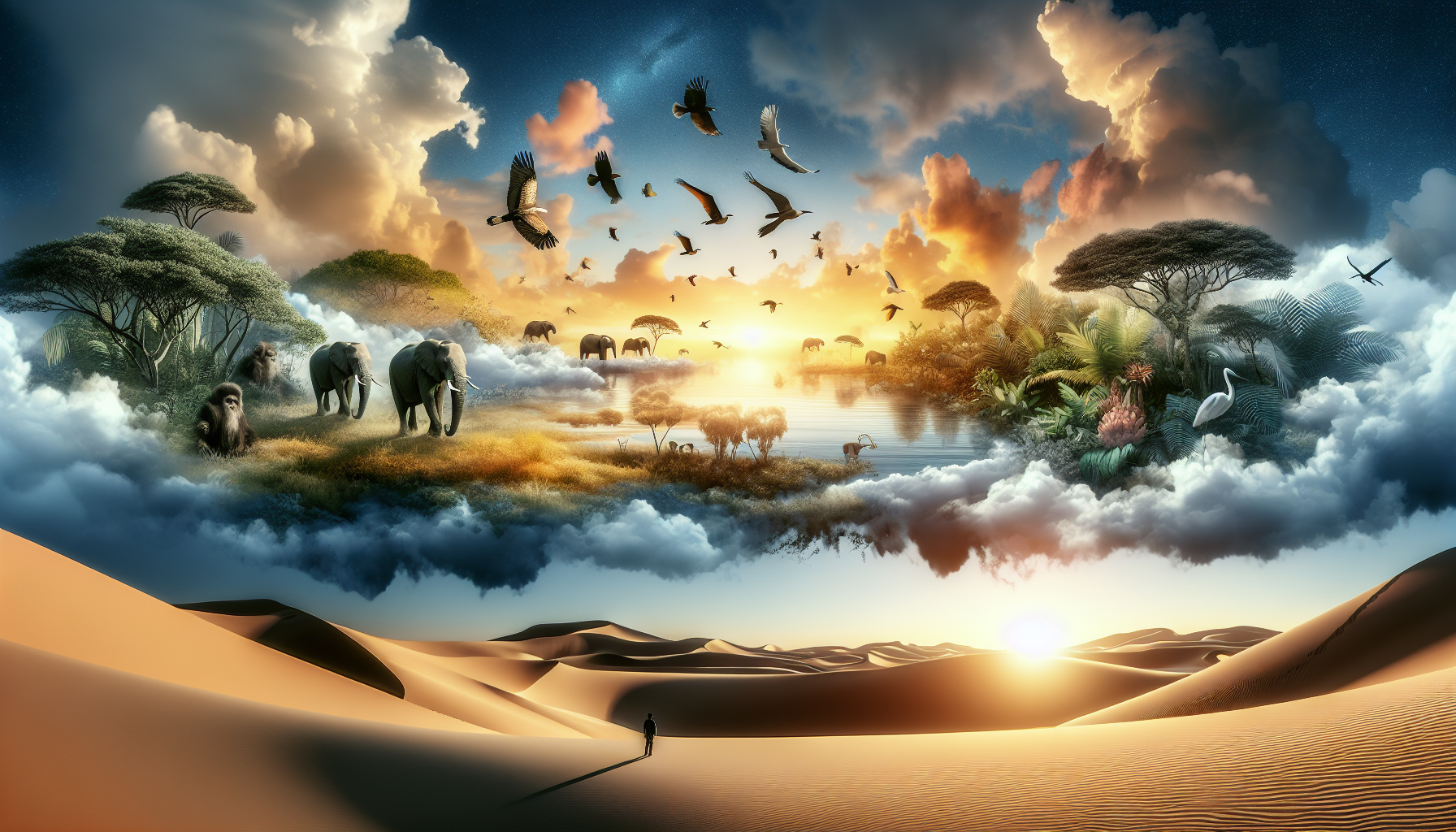
Conclusion
As we reach the end of our journey through the enchanting world of collage art in “Dreamscapes: Exploring the Depths of Imagination Through Collage Art,” it is time to reflect on the myriad insights this exploration has revealed. Collage art, with its unique ability to transcend traditional boundaries and blend diverse elements, offers an extraordinary gateway into the realms of imagination and creativity. 🌌
Throughout this article, we have delved into the rich history and evolution of collage art, tracing its origins from early 20th-century avant-garde movements to its contemporary iterations. We examined how artists like Pablo Picasso and Georges Braque pioneered the technique, using it as a revolutionary tool to challenge conventional artistic norms. This historical context set the stage for understanding how collage art has continuously evolved, adapting to new technologies and artistic philosophies, while maintaining its core essence of innovation and expression.
A significant aspect of collage art is its ability to transform the mundane into the extraordinary. By juxtaposing disparate images and materials, artists create dreamlike narratives that challenge our perceptions of reality. These dreamscapes invite viewers to engage with art on a deeper level, encouraging introspection and interpretation. We explored how this transformative power of collage can evoke emotions, provoke thought, and inspire change, making it a potent medium for personal and social commentary.
One of the key themes highlighted was the democratization of art through collage. In a world where access to art materials and platforms can be limited, collage offers an inclusive medium that requires little more than scissors, glue, and imagination. This accessibility has empowered countless artists to express their unique visions and voices, contributing to a diverse and dynamic global artistic community.
Moreover, the digital age has ushered in a new era for collage art, expanding its possibilities beyond traditional cut-and-paste techniques. Digital tools and platforms allow artists to create complex and intricate compositions with ease, reaching wider audiences and engaging with global artistic dialogues. We examined how this digital evolution has not only preserved the essence of collage art but also amplified its impact in contemporary culture.
The importance of collage art extends beyond the realm of aesthetics. It is a tool for exploration and discovery, offering insights into our subconscious and the collective human experience. Through the layers of images and ideas, collage art allows us to explore themes of identity, memory, and dreams. It encourages us to question, to dream, and to imagine new possibilities, fostering a spirit of creativity that transcends artistic boundaries.
As we conclude, it is essential to recognize the transformative power of collage art in our lives. Whether you are an artist seeking inspiration, an enthusiast eager to explore new forms of expression, or simply a curious soul intrigued by the depths of imagination, collage art offers something for everyone. Its ability to bridge the gap between reality and dreams makes it a uniquely powerful medium, capable of capturing the complexities of human experience in ways that words alone cannot.
In light of these revelations, I invite you to immerse yourself in the world of collage art. Experiment with your own creations, explore the works of renowned artists, or simply take a moment to appreciate the collages that cross your path. By doing so, you contribute to the ongoing dialogue of creativity and imagination that collage art so beautifully embodies. 🎨
I encourage you to share this article with fellow art enthusiasts, leave your thoughts and interpretations in the comments, and let the discussion of dreamscapes and imagination continue. By engaging with this content and sharing your perspectives, you play an integral role in enriching the tapestry of artistic exploration.
For further reading and inspiration, you may explore resources such as The Art Story and Tate’s Collection, which offer insights into the history and evolution of collage art.
Thank you for joining us on this journey through the dreamscapes of collage art. May your imagination continue to soar, and may you find inspiration in the limitless possibilities that lie within your creative grasp. 🌟
- Explore different materials and techniques to expand your artistic repertoire.
- Stay informed about the latest advancements in technology to enhance your collage art.
- Engage with the global collage community to share ideas and find inspiration.
- Consider the environmental impact of your art by incorporating sustainable practices.
- Experiment with multimedia elements to create dynamic and immersive works.
João is a visual storyteller and dream archivist whose work explores the delicate threshold between memory and imagination. Through layered visuals and symbolic design, he captures the fleeting essence of dreams — those strange, luminous, and sometimes haunting fragments that slip through sleep and echo into waking life.
His creative journey is fueled by a deep fascination with the subconscious and its boundless imagery. From half-remembered landscapes to recurring archetypes and surreal encounters, each piece João creates becomes a portal into an inner archive — where time bends, meanings shift, and personal mythologies emerge.
With a background in handcrafted artistry and visual composition, João weaves intuition and precision together. His work doesn’t just depict dreams; it preserves them, translating ephemeral visions into tangible forms that stir emotion, spark curiosity, and invite reflection. Each creation is both a record and a doorway into the uncharted terrain of the psyche.
Through illustrated dream journals, symbolic explorations, and visual essays, João invites others to engage with the poetic architecture of their own subconscious landscapes. His art acts as a mirror — not only of what we glimpse in sleep, but of what lies quietly within us all.
His work is a tribute to:
-
The fragile beauty of dreams that fade with dawn
-
The symbolic language of the inner mind
-
The unseen worlds we inhabit but seldom name
Whether you are a lucid dreamer, a seeker of hidden meaning, or simply captivated by the mystery of the night’s visions, João welcomes you to step into a space where dreams are not lost — they are kept, one image, one symbol, one story at a time.

